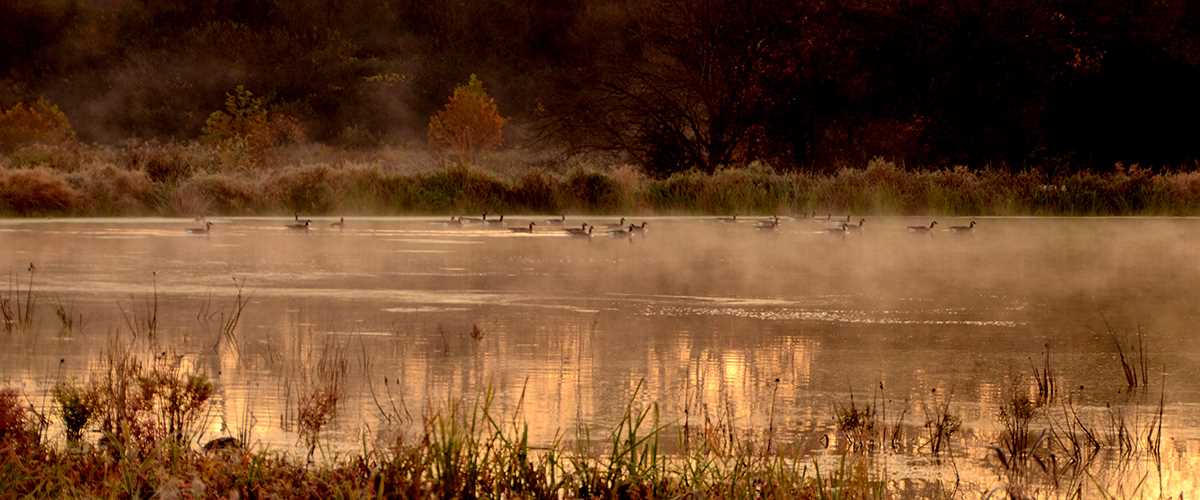More than 11.6 million acres conserved, but much work remains

By Scott Yaich, Ph.D.
Ducks Unlimited members frequently ask, "How are we doing? How many acres did we conserve last year?" The unstated question, though, is usually: "Are we making progress in securing the future of North America's waterfowl?"
In many aspects of our daily lives, a simple "score card" is a pretty good reflection of how things are going. From the score of last night's baseball game to the balance in our savings account, a number or two sums up things nicely. Conservation has its own score cards, but measuring conservation progress toward securing the future of waterfowl can be a little trickier. Ducks Unlimited, like most conservation organizations, has used "acres conserved" as a fundamental measure of progress. That is because acres have long been a basic unit of habitat measurement, and DU's mission has always been focused on habitat conservation to support waterfowl populations now and in the future. So acres provide a useful, although in some ways oversimplified, measure of habitat accomplishments.
DU members can certainly be proud of what we have achieved during our 69-year history—more than 11.6 million acres have been conserved across North America. But just what do these acres represent? What's included in that number?
DU defines "conserved acres" as habitat that DU and its partners have protected, restored, enhanced, or managed for the benefit of waterfowl. For purposes of the DU score card, habitat is considered protected if it is covered by an agreement of at least 10 years or owned by a public agency that assures its long-term management for wildlife. For example, DU works with the U.S. Fish and Wildlife Service to acquire perpetual easements on crucial grassland and wetland habitats in the Prairie Pothole Region (PPR) with federal duck stamp revenues. Such lands are protected forever as waterfowl habitat. Although most DU work is performed on land owned by others, DU has also purchased and owns more than 300,000 acres, mostly in Canada, that will always be maintained for waterfowl benefits.
While many landowners want to work with DU to conserve some of their property to benefit waterfowl, many others are understandably reluctant to lock their land into perpetual agreements. So DU and landowner partners often enter into 10- to 20-year agreements. For example, many farmers in the South have enrolled land in 15-year agreements in the Partners Program. By doing so, they received water-control structures, and in turn, formally agreed to manage their land to provide wintering waterfowl habitat over that period.
DU maintains records of every project on which we work, including costs, partnerships, acreage, location, and type and duration of conservation activity. To maintain accuracy, the total number of conserved acres is updated annually. When DU protects, restores, or enhances the same acreage, we count it only once, and when nonperpetual agreements expire, we reduce the total acreage accordingly. But a high percentage of landowners with nonperpetual agreements continue to manage habitat to benefit waterfowl even after the formal agreement expires. They do so because DU typically works with them to manage land in ways that help waterfowl while also benefiting the landowner's interests. For example, the Partners Program that provides wintering waterfowl places to feed and rest also reduces farming costs by controlling winter weeds. Once landowners see that for themselves, most continue managing their land just as they did under the agreement.
At least as important as the acres that are counted as accomplishments are the acres that aren't counted. For example, DU has been a leader in policy work, such as our advocacy for the Conservation Reserve Program (CRP) of the Farm Bill. While CRP has enhanced millions of acres for waterfowl, none of those acres are counted as conserved by DU because it is impossible to quantify the CRP acreage that accurately reflects DU's role in maintaining its support. Similarly, each year DU provides technical assistance to landowners who manage hundreds of thousands of acres for waterfowl. Those "technical assistance" acres are tracked each year, but even though landowners often put our advice into practice, we do not count those as conserved acres. In fact, DU members alone voluntarily manage hundreds of thousands of acres to benefit waterfowl that are not added to the record of DU accomplishments.
As important as these acreage accomplishments are, the big question remains: "Are we making progress in securing the future of North America's waterfowl populations?" The answer to that question lies in the answer to another question: "What changes are occurring to the landscapes most important to waterfowl?"
Scientists have only recently begun acquiring the tools necessary to measure the capability of North America's habitats and landscapes to support waterfowl populations. DU and the Prairie Habitat Joint Venture (PHJV) recently looked at that question for Canada's PPR and found that despite the significant changes that have occurred on that landscape since 1986, the efforts of DU and other partners have maintained its capability to produce ducks, a remarkable achievement. With its landscape-level approach, the PHJV is forging new ground in measuring conservation needs and accomplishments.
No matter how conservation success is measured, now or in the future, DU members can be tremendously proud of the waterfowl habitat that has been conserved as a direct result of their support. But while these accomplishments deserve celebration, significant challenges remain. Much has yet to be done to secure the future of waterfowl populations in North America, and DU remains dedicated to protecting the habitats they require.